“We want more sidewalks!” I hear that all the time when out on the street talking to folks. Understandably! I, too, walk a lot, often in areas where there are blind curves, no shoulders on the road and no place to get out of the traffic lane… I’d like sidewalks, too, but they’re neither cheap nor simple.
The following is a clear explanation of this complex aspect of city infrastructure. It outlines why “having more sidewalks” is not as simple as just laying down a flat ribbon of concrete.
Thank you, Katie Trefry, for this in-depth discussion of sidewalks in Burien.
For further background, check out the bibliography at the end of the article.
Maureen Hoffmann, President, WABI Burien
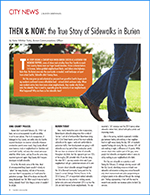 By Katie Whittier Trefry, Burien Communications Officer
By Katie Whittier Trefry, Burien Communications Officer
(Reprinted, with permission, from the Burien Magazine
Summer 2016 Issue, pages 8-10)
THE STORY BEGINS A CENTURY AGO WHEN BURIEN EXISTED AS A GETAWAY FOR WEEKEND TRIPPERS
…some of whom took a trolley from West Seattle to reach their country-homes near our Puget Sound shoreline. Picture a Burien before 1st Avenue, before gridded neighborhood blocks, and before state highways. Back then, the Burien area was the countryside: a wooded, rural landscape set apart from urban Seattle. Sidewalks didn’t belong there.
But the area grew up and urbanized as pressure from growth in Seattle began pushing residents southward to more affordable land – a trend which continues today. When new residents arrive here from more urban neighborhoods, they wonder why Burien lacks the sidewalks they’re used to, especially given the maturity of our neighborhoods. What happened? Why are there so few sidewalks here?
KING COUNTY POLICIES
Burien didn’t exist until February 28, 1993 – at least, not as an incorporated city with an ability to set its own policies. Prior to its incorporation, it belonged to King County, and while cities like Seattle required developers to construct sidewalks whenever construction permits were issued, King County offered more lenience. Look at neighborhoods in Shoreline and even North Seattle, and areas that remain unincorporated like White Center, and you’ll see the same story repeated again and again: King County didn’t require developers to build sidewalks.
To be fair, this made sense at the time. Most of unincorporated King County wouldn’t classify as “urban” for many decades, and lots of the terrain, even now that it’s incorporated, isn’t well-suited for pedestrian passage. Think of the slopes and drop-offs along Maplewild Ave SW. What would it take to build a lasting sidewalk there? One thing is certain: it wouldn’t be simple.
BURIEN TODAY
Now, nearly twentyfive years after incorporation, Burien boasts sidewalks along more than a mile of 1st Ave S and all of Ambaum Blvd. Downtown along SW 152nd Street boasts some of the most walkable sidewalks in the region – wide and comfortable for pedestrian traffic. New developments are going in with sidewalks as a key part of their construction permit. We now have an estimated 60 miles of sidewalks throughout city limits, but this represents just over 20% of the roughly 280 potential miles. If you live along the other 80%, you may wonder when and if your neighborhood will get a pedestrian network of its own.
Concerns about sidewalks emerged through both the 2016 Biennial Community Survey and the City Council’s current Strategic Planning Process. In the 2016 Survey, 27% of respondents ranked sidewalks and bike lanes as a top priority – ranking second, behind only police and enforcement (35%) as how the City can best improve Burien neighborhoods. This represented a 16% increase over the 2014 survey when sidewalks ranked third, behind both police patrols and improving streets.
Also in the survey, residents expressed a notable gap between feeling safe walking in their neighborhood at night versus during the day: 88% of residents reported feeling safe during the day, whereas 54% felt safe walking at night, a difference of 34 points. While concern about crime explains part of this gap, some people feel sidewalks are important when it comes to safely walking in your neighborhood after dark.
The City sees sidewalks as a priority as well. During the February 22 strategic planning session with the City Council, identifying resources to build new sidewalks and maintain existing ones ranked beneath only street improvements and police programming as a highest priority to be addressed through the strategic plan. Perhaps appropriately, it tied with the need to research and consider new revenue options to fund City services.
Sidewalks matter to Burien residents, but building sidewalks is no small matter. What would it take to improve our citywide pedestrian network?
SIDEWALKS AREN’T CHEAP
How much does it cost a City to install a sidewalk along your street? A 2007 estimate from the City of Seattle put the cost at $2 million per mile. In 2015, Seattle Mayor Ed Murray released a statement saying, “A traditional concrete sidewalk with curbs and storm sewers can cost $300,000 per block-face or more.”
What makes sidewalks so expensive? you might ask. Maybe you put in a patio last year – it wouldn’t have cost you nearly so much money. When you picture a sidewalk, you probably envision a smooth-surfaced, rollerblade-friendly slab of concrete stretching from one end of a block to another. But what meets the eye is only a fraction of what makes a sidewalk work. They have to be built with storm drains and drainage systems because when it rains, water is trapped by the new curb face and it has to have somewhere to go or else the lowest point in the neighborhood might flood. What if that’s your backyard? Your garage? Your basement?
Additionally, sidewalks take up space. Sometimes, a street is wide enough to accommodate the extra infrastructure, but oftentimes, it’s not. That can lead to what’s known as Right of Way Acquisition, or buying up pieces of land from property owners in order to make space for public infrastructure. Again, it’s not cheap, and not everyone is equally thrilled to gain a sidewalk at the cost of some of their property.
(Click on the illustration below to view it at a larger size.)
WATER QUALITY
The cost to build a sidewalk in Washington is higher than in many other states due in part to our topography: we often need retaining walls to support sidewalks or to hold back a hillside from falling onto them. Also, we hold ourselves to higher water quality standards than much of the rest of the country. The Puget Sound is important to us. We want our rivers, streams, and lakes to be clean. We want our seafood to be edible and nourishing. Consider this: the less permeable ground (like grass and trees), the more rain sweeps straight into the Puget Sound, unabsorbed and unaltered by natural processes and trees.
Traditional sidewalks aren’t permeable at all. They change the flow of surface water and even with drainage systems, they can lead to accelerated erosion or impact watersheds. Sometimes, to offset these changes, the City might have to buy mitigation property, or property on which retention ponds can be built, and this drives up the cost. What’s more, even simple storm sewers can cost well over $100 per linear foot.
But what about permeable concrete or asphalt, those sidewalks or parking lots that look a little bit like ironed-out cottage cheese? Called Low Impact Development (LID), these materials and design features can offset more expensive traditional storm water treatment costs, but they also can be much more expensive to maintain.
MAINTENANCE
Sidewalks, like all public infrastructure, aren’t a “one and done” deal. Once a sidewalk is built, it begins to deteriorate. It weathers. Tree roots lift it. Sinkholes cause it to droop. Any conversation about building new sidewalks must also take into account the cost of maintenance, and not just maintenance of the new sidewalks, but maintenance of the sidewalks that already exist.
Some of the existing sidewalks in Burien are in dire need of repair as their deterioration is rendering sections of them useless or even dangerous. Ignoring these needed repairs and focusing only on new projects opens the City up to liability. The City needs to keep its sidewalks free of dangerous and unsafe conditions.
BURIEN’S BUDGET REALITIES
Unfortunately, the City of Burien has limited funds with which to work. Sidewalks compete with street maintenance, police services, development planning, and other programs for funding out of the $84 million budget (2015-16 total budget). New construction and improvements compete for just $1 to $2 million in funding every biennium (two years) – not enough to buy very much sidewalk.
The City is responsible for maintaining more than 300 lane miles of streets with a very small crew which fixes potholes, sinkholes, signage, and more. We operate our slurry seal program to extend the life of our streets, but some need much more attention than slurry seal offers: anyone who drove on 1st Ave S between 128th and 136th this spring understands how desperately some of our streets need repair. The 2014 Pavement Management Report tells us that Burien would need to spend about $1.5 million each year just to maintain its current citywide pavement network, but we currently operate on just a fraction of that, making choices difficult about what to maintain.
CREATIVE SOLUTIONS
Burien isn’t the only post-King County city to be grappling with how to provide pedestrian access amidst all of these hurdles. The City of Shoreline’s website states, “Citizen satisfaction surveys indicate that Shoreline residents consider adding sidewalks a priority… Most Shoreline neighborhoods were built to King County rural standards in the 1940s, usually without sidewalks or even walkways.”
We benefiit by learning from other cities’ experiments. In October, Seattle unveiled a plan to use lower-cost materials like stamped and stained asphalt to construct 250 blocks of sidewalks for the price of 150. In 2001, Seattle experimented with new street designs to enhance water quality and pedestrian safety by implementing Street Edge Alternatives – a project known as SEA Streets. The design features built along that single north Seattle block during SEA streets have been replicated in a few other locations since, but even this creative solution cost about $800,000 to complete.
Cities get creative not just in how to build sidewalks but also in how to fund them. In 2004, the City of Olympia raised its utility rates by 50 percent in order to build new sidewalks. Shoreline passed a parks improvement bond which included funding for trails, and it can use that funding to integrate neighborhoods with parks and transportation corridors. And, of course, most cities are requiring developers to build sidewalks when they seek construction permits for new development.
Other options could be explored as well. For example, building sidewalks on just one side of the street could provide pedestrian access at about half the cost of doing both sides while allowing our drainage ditches to keep performing their valuable stormwater functions on the other side of the street. But would this be enough to satisfy neighborhood needs?
THE FUTURE OF SIDEWALKS IN BURIEN
So how does a city like Burien move forward on providing pedestrian access? When it comes to sidewalks, City staff prioritize projects along transit corridors (arterials and collectors) and walking routes to public schools, parks, and government buildings. We apply for grants from the State and from King County, but we compete against dozens of other deserving projects and corridors for very limited funds. Such is the case with a corridor next to Sylvester Middle School where the City has applied for a Safe Routes to Schools grant, Transportation Improvement Board grant, and METRO pedestrian improvements grant, but has yet to be awarded any funds. But we’ll keep trying!
Currently, Burien has a number of projects in its Transportation Improvement Plan to improve its pedestrian facilities. Out of the approximately 50 projects listed in the Plan, 15 are for pedestrian safety improvements and/or sidewalks. Another 22 projects involve road reconstruction that includes new sidewalks. And as of now, only two of these projects have funding, both through grants.
The City Council will build a two-year budget over the next six months, funding projects for 2017 and 2018. Councilmembers will weigh options for how to fund critical priorities like sidewalks. There are essentially five (5) funding mechanisms from which jurisdictions can draw in order to generate revenue for infrastructure projects: Local Improvement Districts (LID), grants, property taxes, vehicle license fees, and sales taxes through designated Transportation Benefit Districts (TBDs). These same funding mechanisms support all infrastructure projects like street maintenance and transit, and the City competes with the County and the State when it wants to raise more funds.
Additionally, most of these funding mechanisms include caps, meaning the City can’t ask for more than the capped amount at one time, or sometimes, ever. Finally, most sources of funding require voter approval, which means that at least half of your neighbors have to agree with you that sidewalks are a priority worth paying for. And that can be a difficult decision, especially when a paycheck doesn’t seem to go as far as it used to.
History – recent history, in fact – tells us your neighbors might not be keen on shelling out money for sidewalks. In November 2009, Burien became the first Washington city to vote on increasing car-tab fees by $25 in order to fund sidewalks and bike lanes. The measure failed, with a whopping 74 percent of voters voting no on the measure. Though competing measures on the same ballot and the dawn of the Great Recession surely contributed to the failure of the sidewalks measure, such a small percentage of support leaves doubts about how to best meet Burien’s pedestrian needs.
How does the story end? The more pressing question might be when does the story end? It may be a long road (or long sidewalk) to get there but in time, as the City finds adequate resources, your neighborhood just might get the sidewalks you need to feel comfortable walking your dog, day or night.
BIBLIOGRAPHY
King County lack of regulations: https://www.theurbanist.org/2015/08/18/map-of-the-week-lack-of-sidewalks-in-seattle/ (same article: Seattle lacks 900 miles of sidewalk, has 2000 miles of sidewalk to maintain, a 28%:72% ratio)
Sidewalk costs:
http://www.seattletimes.com/seattle-news/giving-everyone-a-sidewalk-is-no-walk-in-the-park/
Ballot measure failure: http://blogs.djc.com/blogs/SeattleScape/2009/11/13/more-sidewalks-depends-on-whos-paying/
Seattle Mayor Ed Murray quote:
http://murray.seattle.gov/?s=sidewalks#sthash.C7OUSIHQ.dpbs
City liability for sidewalk condition:
http://mrsc.org/Home/Explore-Topics/Public-Works/Streets,-Road-and-Sidewalks/Sidewalk-Construction-Maintenance-and-Repair-%281%29.aspx
Shoreline: http://www.cityofshoreline.com/government/departments/public-works/transportation-services/sidewalks
SEA Streets:
http://www.seattlepi.com/news/article/Innovative-design-cuts-street-runoff-1101062.php
Stamped sidewalks:
http://www.seattlebikeblog.com/2015/10/30/what-do-you-think-of-seattles-low-cost-sidewalk-plans/
Burien Magazine is published by
Philips Publishing Group for the City of Burien
PUBLISHER: Peter Philips: 206.284.8285
peter@philipspublishing.com
2201 W. Commodore Way, Seattle, WA 98199
www.philipspublishing.com
EXECUTIVE EDITOR: Katie Whittier Trefry: 206.439.3167
KatieT@burienwa.gov
City of Burien Communications Officer
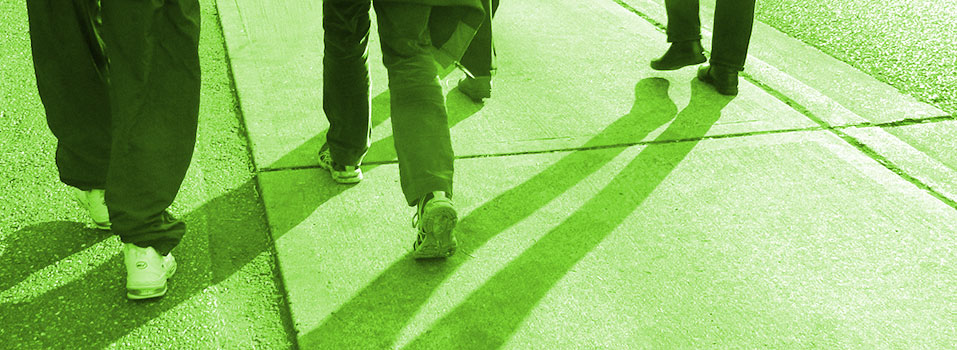
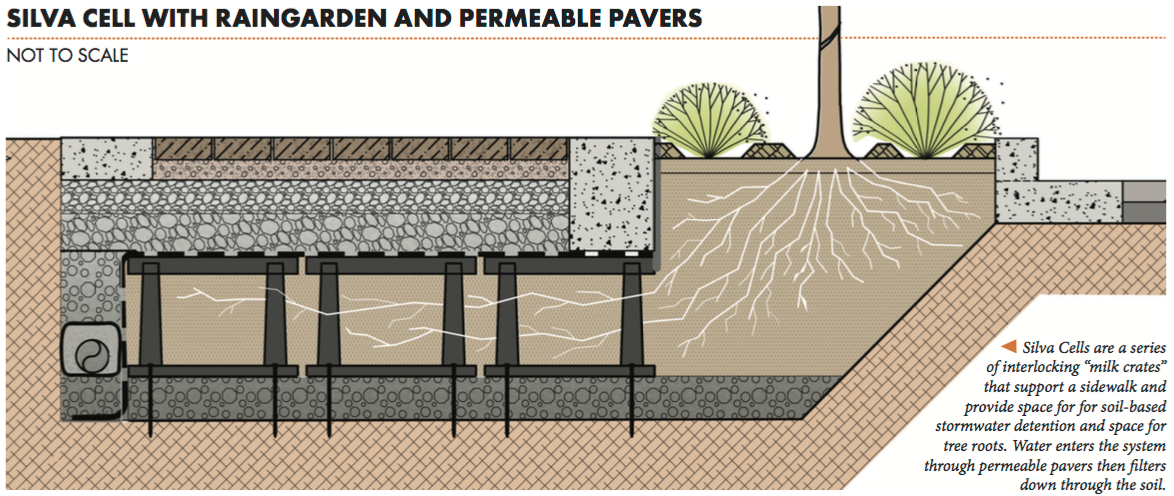

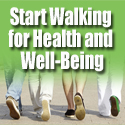


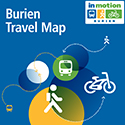
A very thoughtful article. Thanks.